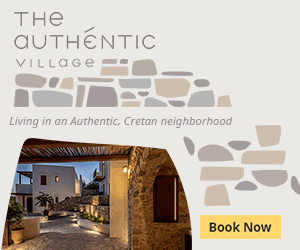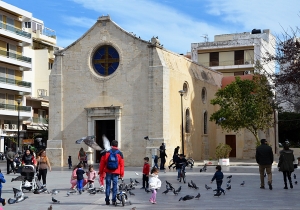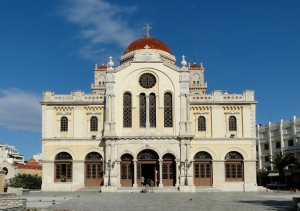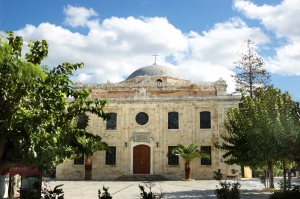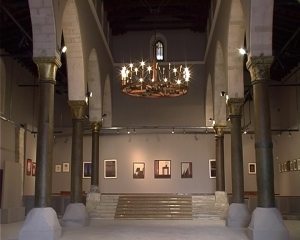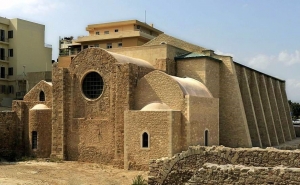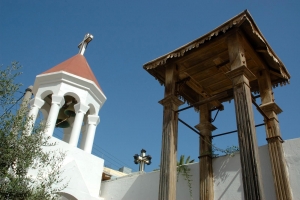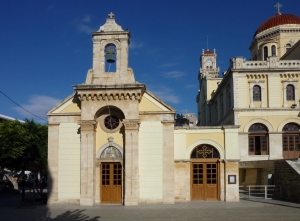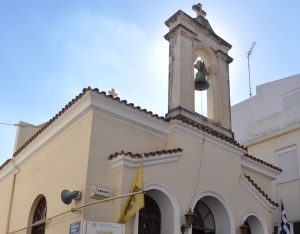The Museum of Byzantine Icons and Relics of Archdiocese of Crete is located in the Venetian church of St. Catherine of Sinai, in the center of Heraklion and next to the cathedral of Saint Minas.
Saint Minas is the patron saint and protector of the Grand Castle (Heraklion) and its past combines legend with tradition and the town's history. It was built in 1862, next to the smaller temple of Saint Minas.
During the second Byzantine period, as the largest and prime official church in the city of Chandax, St. Titus became the seat of the new Orthodox Diocese of Crete. The Venetians later installed a Catholic archbishop and converted the church into a Catholic cathedral.
The Municipal Gallery of Heraklion is hosted in the Basilica of Saint Mark in the center of Heraklion, just opposite the famous Lions’ fountain. The basilica was built by the Venetians in 1239, was destroyed by an earthquake in 1303 but restored immediately,
The Church of Sts Peter and Paul was built during the early years of the Venetian domination and served as the main temple of the monastery of Dominican order (Domenicani Predicatori). It is one of the oldest monuments of architecture of the Cistercian monks in the 12th century, both in Europe and in Greece.
Saint George was a relatively small three-nave church built in the second Byzantine period and ceded to the Armenians who had settled in Heraklion at that time, possibly on the orders of Nicephorus Phocas.
Reference is made to the Chapel of St. Minas and the Virgin Mary Pandanassa in the inventories of Chandax churches in Venetian times. Having fallen into disuse for many years, in 1735 it was renovated to become the cathedral, thenceforth serving as the main centre for the Orthodox Christian faithful in Ottoman Chandax.
The present-day Church of Saint Paraskevi in Monis Kardiotissis St. was built in the early 20th century and consecrated on 13th June 1910.
- 1
- 2





